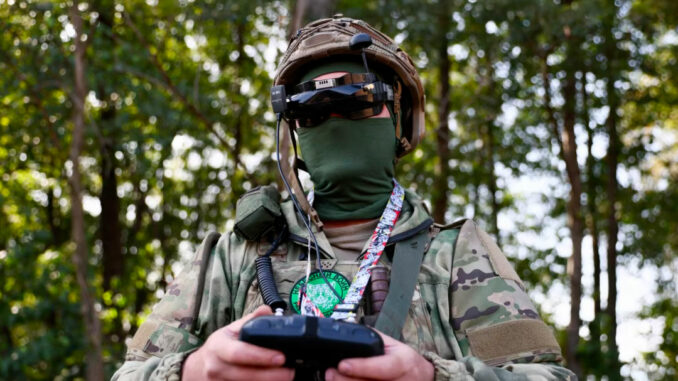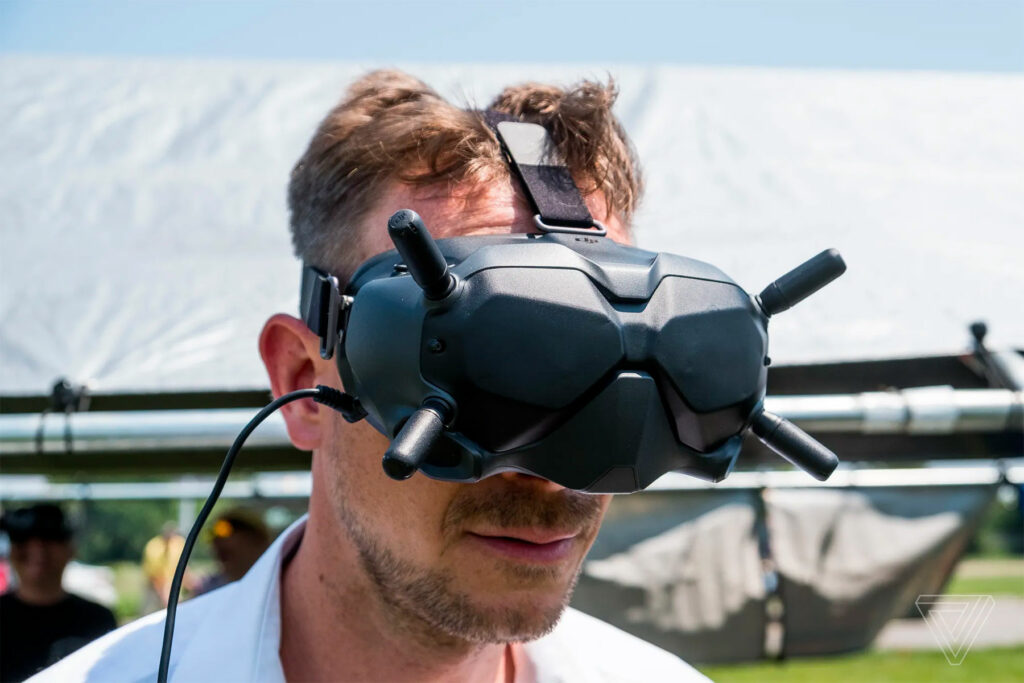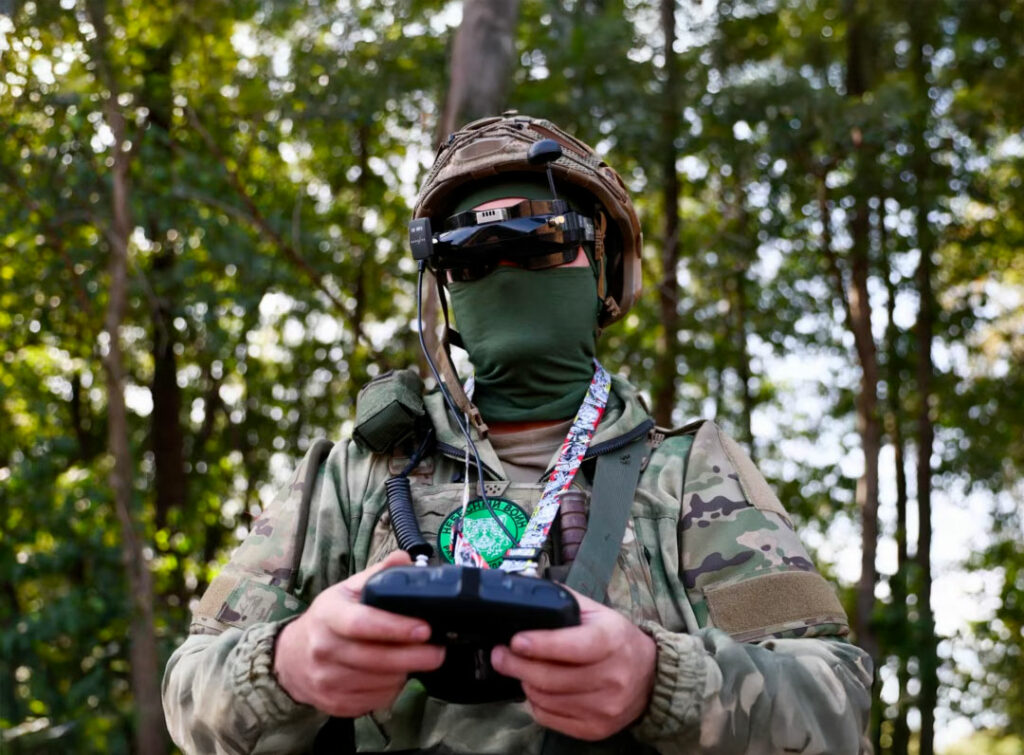
Explosive devices concealed in FPV goggles target Russian drone operators, reminiscent of Israeli attacks on Hezbollah in 2024.
Russian authorities are investigating the shipment of booby-trapped first-person view (FPV) goggles to drone units, intended to explode when used. The tactic is reminiscent of Israel’s 2024 attacks on Hezbollah, where thousands of booby-trapped beepers and walkie-talkies were used. Although the devices contain a small quantity of explosives (10-15 grams), their detonation can cause serious or fatal injuries to operators. This threat underlines the need for increased vigilance when receiving electronic equipment on the battlefield.
The strategic use of FPV drones in modern warfare
First-person view (FPV) drones have revolutionized contemporary military strategies. Initially designed for civilian applications, these small multi-rotor helicopters have been adapted for military missions, notably in Ukraine, where their strategic use has intensified. The addition of explosive charges transforms these drones into precision-guided missiles, offering a targeted attack capability at lower cost. For example, an FPV drone equipped with an explosive charge weighing a few kilograms can neutralize an armored vehicle, offering a significant tactical advantage on the battlefield.

FPV goggles: an essential and vulnerable piece of equipment
FPV goggles are essential for drone operators, giving them immersive vision and precise control of the aircraft. However, this dependence makes them a prime target for sabotage. Recent reports indicate that FPV goggles, including the Skyzone Cobra model, have been booby-trapped with improvised explosive devices containing between 10 and 15 grams of plastic explosives. Detonation occurs when the goggles are activated, potentially causing fatal injuries to the operator. Although the quantity of explosives is relatively small, the explosion is sufficient to cause severe, even fatal, head trauma.
A parallel with Israeli attacks on Hezbollah in 2024
This method of sabotage is reminiscent of the attacks carried out by Israel against Hezbollah in September 2024. In these operations, thousands of beepers and walkie-talkie bombs were simultaneously detonated, killing over 37 people and injuring over 2,931 others. These attacks were aimed at disrupting Hezbollah’s communications and sowing fear among its members. The sophistication of this operation lay in the ability to infiltrate the enemy’s supply chain and synchronize the detonations for maximum impact.
Consequences for Russian forces and preventive measures
The discovery of these booby-trapped glasses has major implications for Russian forces. It underlines the need for increased vigilance when receiving equipment, even from sources considered reliable. The Russian authorities have already intercepted several of these devices thanks to the vigilance of military personnel, but the extent of the threat remains uncertain. It is essential to implement strict inspection protocols for electronic equipment, including thorough visual checks, functionality tests in controlled environments and the use of explosive detectors. In addition, raising troops’ awareness of the risks associated with the use of electronic equipment is crucial to preventing such attacks.

Strategic implications and lessons to be learned
This sabotage attempt highlights the evolution of threats on the modern battlefield, where electronic warfare and technological sabotage play an increasing role. Armed forces need to adapt their strategies to include cybersecurity and counter-sabotage measures, particularly with regard to electronic equipment. This includes the development of secure supply chains, rigorous supplier verification and the integration of tamper-detection technologies. Recent events show that modern warfare is no longer limited to direct confrontation, but also includes subtle attacks aimed at undermining soldiers’ confidence in their equipment and disrupting operations.
The threat of booby-trapped FPV goggles underlines the need for armed forces to remain vigilant and adapt to new forms of technological warfare. The integration of enhanced security protocols, the ongoing training of troops in new threats and the development of technological countermeasures are essential to maintain operational effectiveness and ensure the safety of military personnel. Modern warfare is evolving rapidly, and only armies capable of adapting to these changes will be able to maintain a strategic advantage in the field.
War Wings Daily is an independant magazine.